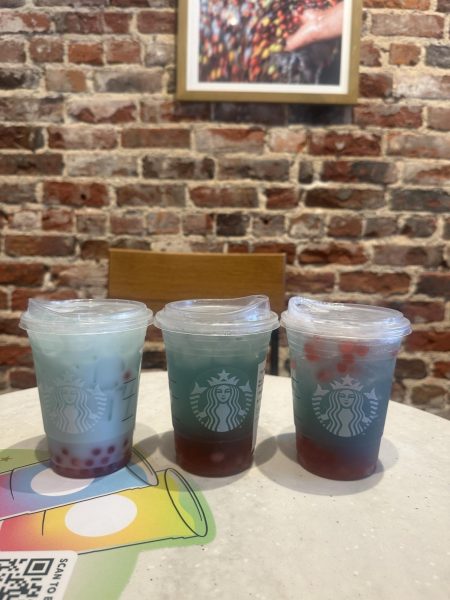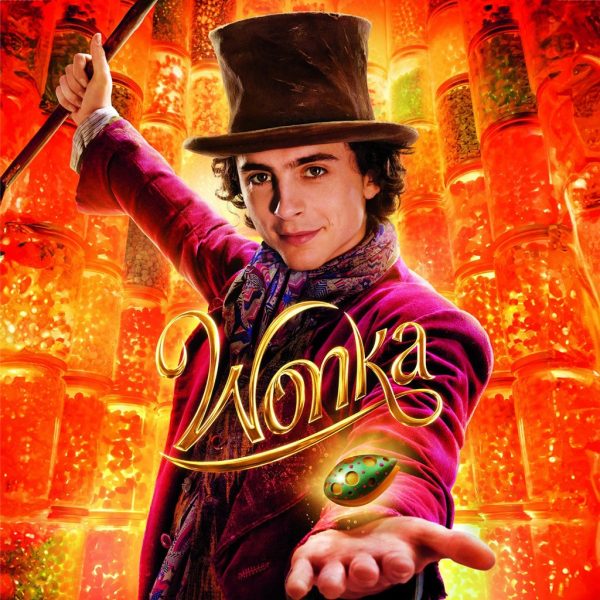Turning Red Churning Controversy
Pixar’s newest movie sparks controversy over puberty and culture
March 17, 2022
Growing up is a beast! 13-year-old Meilin would agree; Pixar’s new moving “Turning Red” explores the world of confusion that Meilin undergoes as she discovers her family’s special connection to red pandas amidst puberty.
Meilin is the only child of a Chinese family living in Toronto. Her family runs the oldest temple in the country which displays her ancestor Sun Yee, who supposedly had a magical connection to red pandas. Despite featuring culture as a significant part of Meilin’s family, she is nothing short of a middle school girl. With her friends Miriam, Priya and Abby she fangirls over the boyband 4-Town and crushes on boys. “Turning Red” also shows an aspect of being a 13-year-old girl that isn’t seen as much in media: periods.
Meilin wakes up one day to an alarming discovery- she turned into a giant red panda. Hiding the secret from her mom, her mom assumes she has started her period. The film shows the stress that comes with first periods, and talks openly about pads. This aspect did not sit so well with some viewers.
“Just a heads up for parent’s out to all there… Disney’s “Turning Red” is NOT for kids… at all,” user Felicia Renee wrote on Facebook.
Between the discussion of puberty and prominent display of Chinese culture, some found it uncomfortable and off-putting. In my opinion, people need to get over themselves.
If your children viewing a movie that talks about menstruation in a kid-friendly way, you should analyze what about that offends you. Everyone goes through puberty; children shouldn’t be guarded media that simply discusses it. A review from Chicago Sun-Times warned that kids “might have questions.” Is that not the point? If appropriate displays of puberty in children’s media prompt them to ask questions, that is a good thing! Kids do not need to be hidden from experiences that they will soon have.
Outside of the controversy over periods, some viewers had quarrels with the prominence of Chinese culture and tradition in the movie. Honestly, I thought we would be past this in 2022, but I guess I was wrong.
Sean O’Connell, CinemaBlend’s managing director, wrote “Some Pixar Films are made for universal audiences. ‘Turning Red’ is not. ‘By rooting ‘Turning Red’ very specifically in the Asian community of Toronto, the film legitimately feels like it was made for Domee Shi’s [the director] friends and immediate family members, which is fine — but also, a tad limiting in its scope.”
How are themes of family expectations, generational trauma and coming of age, may I ask, limited in scope? As a white American teenage girl, I thought the film was an exceedingly good portrayal of 13-year-old girls. The inclusion of Meilin’s cultural heritage is in no way uncomfortable or confusing.
“I don’t think I’ve ever felt more seen by a film like this as an Asian Canadian in the Toronto area,” @firewalkwjaime wrote on Twitter.
The cast of the movie responded to the flood of racist-undertoned hate with their perspectives.
“I really appreciate that Asian audiences and the journalists who’ve spoken about [the movie], there’s so much understanding,” actress Sandra Oh (who voices Meilin’s mother) said, “if you come from an immigrant background or an Asian background — but it’s not limited to that — or have a parent who loves you or who has been, as I like to say, ‘hyper-vigilant’ — there’s a place for that.”
I’d say that “Turning Red” is a great movie for widening the perspective of child audiences who may be confined to their own cultural experiences. The mentions of periods and pads are kid-friendly, and the presentation of Chinese culture is nothing but respectful. If you are looking for a fun, adorably animated and heartwarming movie to watch, “Turning Red” is the perfect option.















